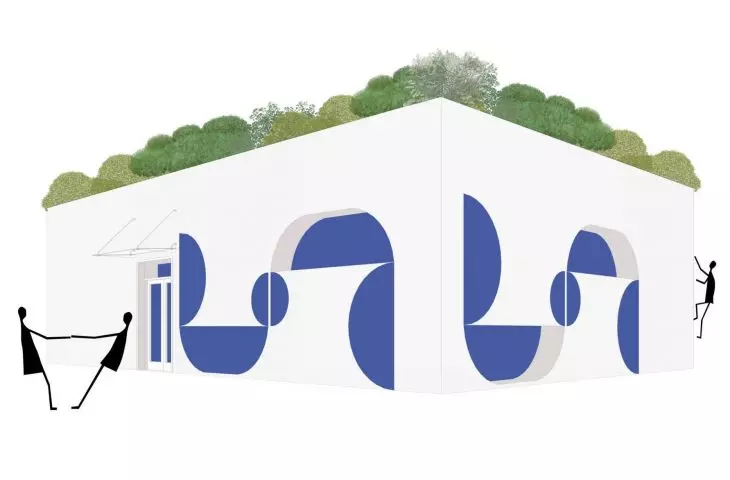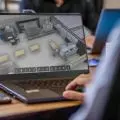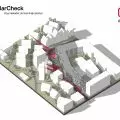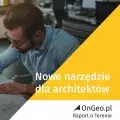Work submitted for the competition
"Best Diploma Architecture"
In the late 1920s, ambitious modernist architecture was being built in smaller towns and cities, indicating aspirations for metropolitanism. The modernist architecture of Wloclawek is a strong page in the city's history. If only architectural sites were cared for, Wloclawek could promote itself as the modernist capital of Kuyavia. Lack of awareness of the value of interwar architecture means that Wloclawek's modernist resources are not properly displayed and appreciated, they are deteriorating, often falling into disrepair, and renovation work carried out on these buildings is not done according to the rules for historic buildings.
St. Anthony Street and the Szlama Luks tenement house
© Agnieszka Przybylska
Wloclawek is not a typical tourist city. An urbanist attraction would raise its profile in the region, a new modernist identity would become an interesting tourist attraction, raise the level of awareness of local heritage among residents, maybe even give birth to pride in previously underestimated resources.
The main idea of the trail is to lay it out in such a way that it includes the most important monuments of modernism in the city and is walkable.
the route of the trail of Wloclawek modernism by day and by night
© Agnieszka Przybylska
It is planned that each tenement house included in the trail will have a logo with the initials MW (Modernizm Włocławek) on its facade, and next to it a QR code, which, when scanned with a smartphone, redirects the user to a free city tour guide application. In addition to many typical functions, the app also has a "turn on the lights" mode, an option available only after dark. The idea is based on the Lumi-R app by lighting design pioneer Roger Narboni. The system works in the immediate vicinity of points along the route (50 meters). With the app, virtual lighting can be activated in the form of graphics and virtual lighting videos. It is a kind of response to the energy transition and light pollution in cities.
app
© Agnieszka Przybylska
According to Carlos Moreno, a pioneer of the idea of fifteen-minute cities, European cities with populations of 100,000 or more can constantly increase pedestrian accessibility and thus reduce internal inequalities by increasing the variety of elements accessible by foot along with improving pedestrian infrastructure. This means that designating a trail and involving the local community in promoting it would help flatten social inequalities in the long run. The city's promotion of activities that do not involve a car promotes improved health and quality of life, as well as concern for the environment.
The trail has been enhanced with three original architectural elements. They are a seat, a pavilion and an information cafe.
The trail has been enriched with three author's architectural elements
© Agnieszka Przybylska
The seat symbolizes the reclaiming of public space for residents. The geometric furniture is large, with the trail's logo, located to direct attention to the qualities of the Modernism trail's resource while resting.
seat and pavilion
© Agnieszka Przybylska
The pavilion is an elaborate form of seat, erected on the plan of the trail logo. On its roof there are plantings of plants (sedum, dry grasses, meadow species, so-called spontaneous vegetation). The plant cover retains rainwater and provides additional green space for residents. The pavilion provides rainwater retention, excess water from the roof is retained in a vegetative retention and infiltration box. Surface runoff from the sidewalk around the building is also directed there. Any excess water from the box is directed to the root zone of trees growing nearby. Green pavilions address the risk of local flooding, overloading storm drains, and reducing urban heat islands. They also support local biodiversity by offering mini-habitats for insects and birds.
cafe
© Agnieszka Przybylska
The information cafe is the largest facility along the trail. It is built using modular technology and belongs to closed-loop construction. Modular technology reduces waste during construction and reduces the carbon footprint once the building is built. Modular designs are a way to recycle urban space in the form of superstructures, the structures are lightweight, ready for reuse, and can be efficiently placed anywhere or connected to an existing building. The café project is meant to show visitors how we can design a building to favor nature.
details
© Agnieszka Przybylska
The building was designed based on the Dutch innovative building model the HoutKern Building Method, it consists of 95 percent bio-based materials. Visitors to the café will be able to experience construction that takes nature into account and see how the building is part of the local ecosystem. Such a model fits perfectly with the future closed-loop building economy, as repurposing and reusing buildings is becoming increasingly common. The processing of raw materials, assembly, electrical and water installation and complete finishing of the modules is done at the factory, and the modules are delivered plug-and-play to the construction site.
Agnieszka PRZYBYLSKA
Illustrations: © Author


















































































